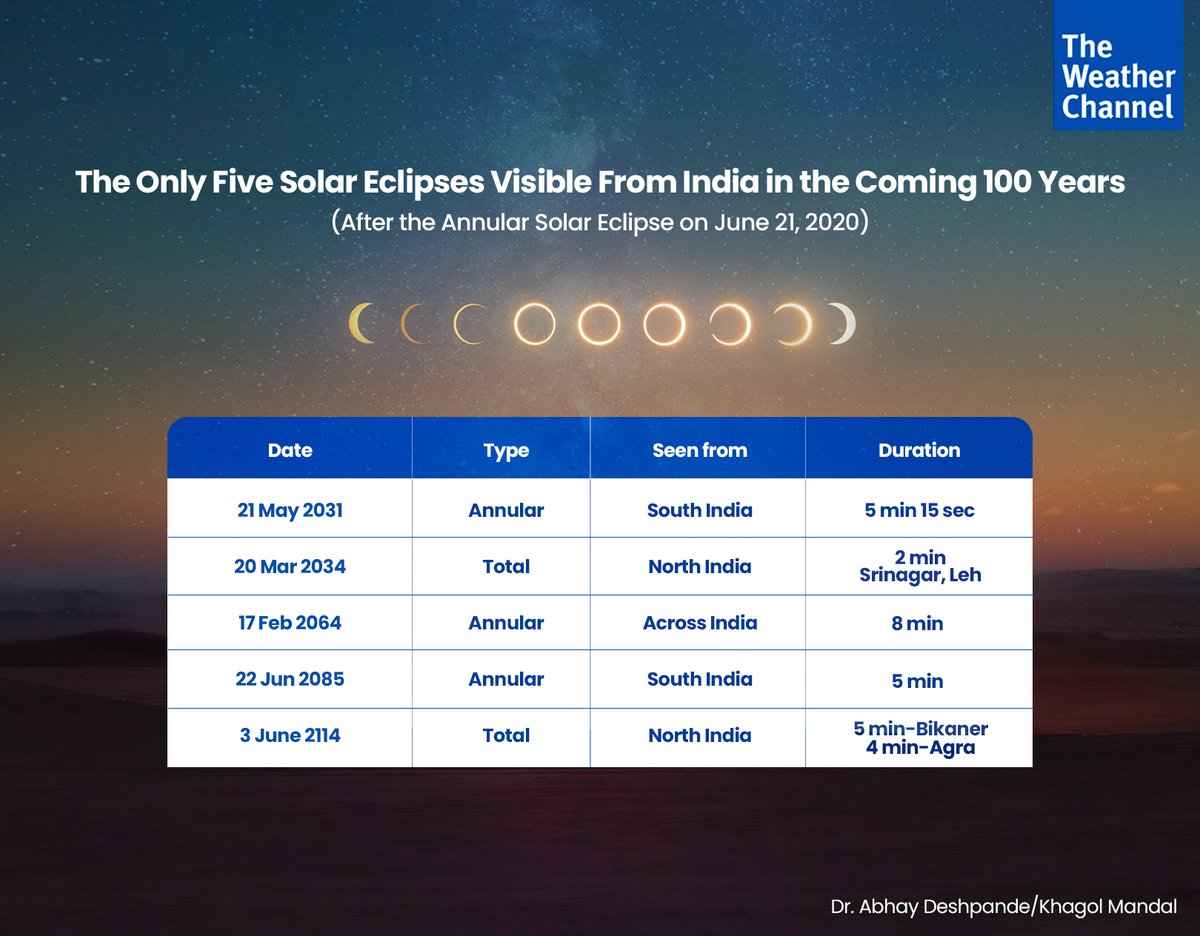Why is #JUNE21 the Longest Day for Global North? Science Behind #SummerSolstice and Earth’s Changing Seasons
weather.com/en-IN/india/sc…
(📸 : J Jackson/BCCL Coimbatore)
weather.com/en-IN/india/sc…
(📸 : J Jackson/BCCL Coimbatore)

The Northern Hemisphere, including India, will witness the longest daytime of the year on Sunday, June 21.
#SummerSolstice #SummerSolstice2020
#SummerSolstice #SummerSolstice2020
The sun will reach its highest position in the sky, and the shadows will disappear at noon if you are in Ujjain, Gandhi Nagar or essentially any place along the tropic of cancer on this day.
#SummerSolstice #SummerSolstice2020
#SummerSolstice #SummerSolstice2020
So, what makes June 21 special? The short answer is that, from this day onwards, the southern motion of the Sun, also referred to as the ‘Dakshinayan’, begins.
#SummerSolstice #SummerSolstice2020
#SummerSolstice #SummerSolstice2020

On this day, the Earth will be positioned in its orbit, where the North Pole is at its maximum tilt towards the Sun. The day marks the commencement of astronomical summer in the northern hemisphere.
#SummerSolstice #SummerSolstice2020
#SummerSolstice #SummerSolstice2020
To clarify, June 21 is the longest day of the year in terms of more hours of sunlight—but the number of hours (24) remains the same. For instance, in Delhi, the Sun will rise at 5.24 am on this day and set at around 7.23 pm—marking nearly 14 hours of daylight.
#SummerSolstice
#SummerSolstice
Officially, the solstice is observed at around 3:13 am on June 21 in India. This year, it’s even more special for all astronomy enthusiasts, as the day will coincide with a rare annular solar eclipse.
#SummerSolstice #SummerSolstice2020
#SummerSolstice #SummerSolstice2020

It’s only the second time when these two astronomical events are occurring together since 1982.
#SummerSolstice #SummerSolstice2020
#SummerSolstice #SummerSolstice2020
Therefore, the summer solstice this year will be marked by a ‘ring of fire’. On this day, parts of the northern hemisphere will experience the longest period of sunlight. This official onset of this season is marked with long days, more sunlight, and shorter nights.
How does the summer solstice happen?
The change of any season, equinoxes, or solstices completely depends on the Earth’s tilted axis of 23.5° with respect to the Sun. The axis of the Earth is an imaginary line that runs through the centre of the planet.
The change of any season, equinoxes, or solstices completely depends on the Earth’s tilted axis of 23.5° with respect to the Sun. The axis of the Earth is an imaginary line that runs through the centre of the planet.
Due to this axial tilt, only one part of the Earth—either southern and northern hemisphere—faces the Sun at any time of the year, while the other is farther away from it.
#SummerSolstice #SummerSolstice2020
#SummerSolstice #SummerSolstice2020
Therefore, the hemisphere which faces the Sun experiences summer, and the other half of Earth witnesses winter season.
#SummerSolstice #SummerSolstice2020
#SummerSolstice #SummerSolstice2020
Solstice is a Latin word for ‘Suns stands still’. It’s called so as the Sun’s projection appears as if it is not moving—once it reaches the highest position in the southern or northern part of the equator.
#SummerSolstice #SummerSolstice2020
#SummerSolstice #SummerSolstice2020
On the summer solstice for the northern hemisphere, the Sun’s location is directly above the Tropic of Cancer. The north pole is tilted about 23.4° towards the Sun, which makes the rays fall directly overhead of the Tropic of Cancer, whose latitude is roughly the same 23° 3’ N.
This position changes in the time frame of six months, as the Sun moves towards the South pole. The Sun then goes directly overhead of the Tropic of Capricorn, whose latitude is 23.5°S—marking the winter solstice.
#SummerSolstice #SummerSolstice2020
#SummerSolstice #SummerSolstice2020
In simpler words, when the summer solstice takes place in the Northern Hemisphere in June, the north pole is tilted towards the Sun, and the south pole away from it. This marks the beginning of different seasons in both the hemispheres.
#SummerSolstice #SummerSolstice2020
#SummerSolstice #SummerSolstice2020
The solstice takes place at the same time for everyone on Earth, marking the longest day for one hemisphere, and shortest for another.
#SummerSolstice #SummerSolstice2020
#SummerSolstice #SummerSolstice2020
• • •
Missing some Tweet in this thread? You can try to
force a refresh














